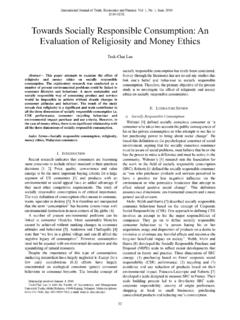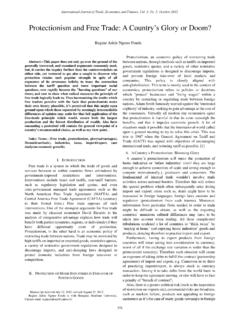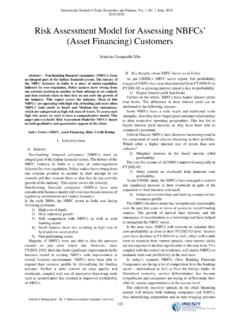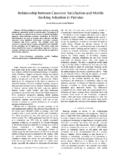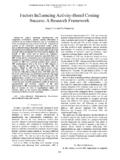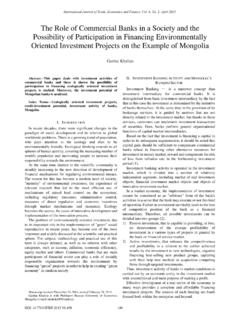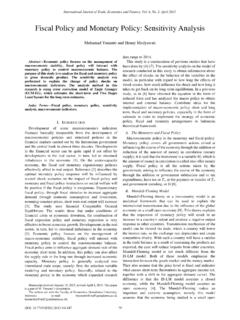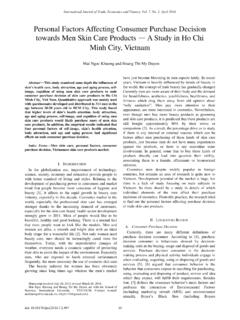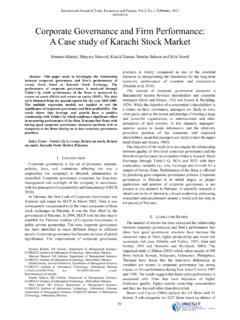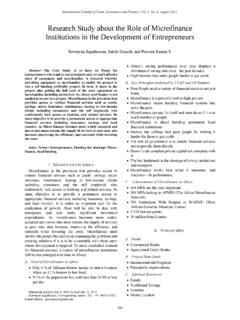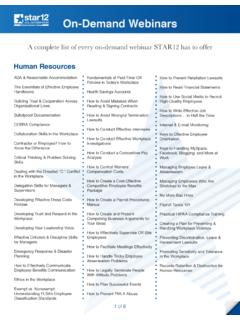Transcription of Use or Abuse of Creative Accounting Techniques - …
1 Abstract The study has been conducted to have a detailed view on Creative Accounting . A very important question has been tried to be answered in this study that why managers do Creative Accounting and how they become successful in performing such practice in the presence of stringent rules and procedures. Another aspect of Creative Accounting has been tried to be explored that whether this Creative Accounting practice is good for the companies or it brings companies in crises situation. Discussion based model has been used on the basis of past references and experiences. Link of governance with Creative Accounting practices has also been tried to be explored in the study.
2 At the end it is concluded that the complex and diverse nature of the business transactions and the latitude available in the Accounting standards and policies make it difficult to handle the issue of Creative Accounting . It is not that Creative Accounting solutions are always wrong. It is the intent and the magnitude of the disclosure which determines its true nature and justification. Index Terms Creative Accounting , earnings management, corporate governance. I. INTRODUCTION Subject of Creative Accounting is normally portrayed maligned and negative act. As soon as these words Creative Accounting are mentioned, the image that emerges in one s mind is that of manipulation, dishonesty and deception.
3 Study wishes to propose today that Creative Accounting is a tool which is much like a weapon. If used correctly, it can be of great benefit to the user; but if it is mishandled or goes into the hands of the wrong person, it can cause much harm. Creative Accounting has helped more companies to get out of a crisis than land them into a crisis. The weapon is almost always innocent; the fault whenever it emerges lies with the user. Coming from a developing country where stock exchanges listings often fail to reflect the true credentials of a company, There are many cases where companies have benefited tremendously by using Creative Accounting Techniques and remained afloat during difficult times.
4 Before we go into jargon and intricacies of the subject, let me relate an episode from Pakistan s cement industry. In mid-nineties, the country suffered an acute shortage of cement. The government announced a number of incentives for new cement plants and as a result a number of new plants were planned seven to be precise. The combined production of these and existing plants was expected to meet the demands of cement for the country as well as leave a surplus for export to its neighbors like Afghanistan and Manuscript received October 9, 2011; revised December 30, 2011. S. Z. Ali Shah is with International Islamic University, Islamabad, Pakistan (email: S. Butt and Y. B.)
5 Tariq are with Mohammad Ali Jinnah University. Islamabad (email: India who are always short of this product. It takes three years for a cement plant to start production. By the time the new plants came into production in late nineties, the country s economic scenario had changed. The government had no money for development, the economy was generally in recession, and construction had virtually come to a halt. With tremendous overcapacity, the cement prices started falling precariously. The companies got together and slashed production. Plants started operating at an average of around 22% production capacity to ensure that prices do not fall. The prices drop stopped but still it did not help much.)
6 Now cement is one industry where the largest slice of costs is fixed and time related, rather than operations related. As much as 72% of annual costs of a new cement plant may comprise of only two items namely depreciation and interest. Both of these are fixed and computed on the basis of time. As a result, a low capacity utilization meant higher cost per ton of cement produced in any period, leading to huge losses. One Creative way found around this situation was to convert the depreciation cost from a fixed time related cost to a variable charge. To achieve this end, the method of computing annual depreciation by dividing the total plant cost over the number of plant s useful life was abandoned.
7 Instead, the total cost of plant was divided over the total cement production to be expected from the plant over its entire life thereby computing depreciation cost per ton of cement produced. This drastically curtailed the periodic charge to the Income Statement and improved the profitability figures. This had no implication for corporation taxes as depreciation is not a tax allowable expense virtually anywhere in the world. So using a Creative Accounting tool, the companies were able to show profits, or minimize losses, during a difficult period when the capacity utilization was low. This enabled them to keep the investors reasonably comforted and the staff relaxed. The interesting thing is that when the demand rose and companies started operating at higher capacity, they did not need to change their Accounting policy.
8 Hence, without any deception, ill-will or dishonesty, the directors of cement plants were able to pull through a crisis. Now lets have a view on some technical aspects of this phenomenon. II. SOME DEFINITIONS OF Creative Accounting Creative Accounting refers to the use of Accounting knowledge to influence the reported figures, while remaining within the jurisdiction of Accounting rules and laws, so that instead of showing the actual performance or position of the company, they reflect what the management wants to tell the stakeholders. Purposeful intervention in the external financial reporting process with the intent of obtaining some Use or Abuse of Creative Accounting Techniques Syed Zulfiqar Ali Shah, Safdar Butt, and Yasir Bin Tariq International Journal of Trade, Economics and Finance, Vol.
9 2, No. 6, December 2011531exclusive gain . Creative Accounting is the transformation of financial Accounting figures from what they actually are to what preparer desires by taking advantage of the existing rules and/or ignoring some or all of them . [1] Every company in the country is fiddling its profits. Every set of published accounts is based on books which have been gently cooked or completely roasted. The figures which are fed twice a year to the investing public have all been changed in order to protect the guilty. It is the biggest con trick since the Trojan horse.. In fact this deception is all in perfectly good taste. It is totally legitimate. It is Creative Accounting .
10 [2] Many terms can be used to describe the practices of changing the facts in Accounting , cooking the books, aggressive Accounting , massaging the numbers, window dressing, earnings management, etc. Common Labels for Financial Numbers Game Label Definition Aggressive Accounting A forceful and intentional choice and application of Accounting principles done in an effort to achieve desired results, typically higher current earnings, whether the practices followed are in accordance with GAAP or not Earnings management The active manipulation of earnings toward a predetermined target, which may be set by management, a forecast made by analysts, or an amount that is consistent with a smoother, more sustainable earnings stream Income Smoothing A form of earnings management designed to remove peaks and valleys from a normal earnings series.
